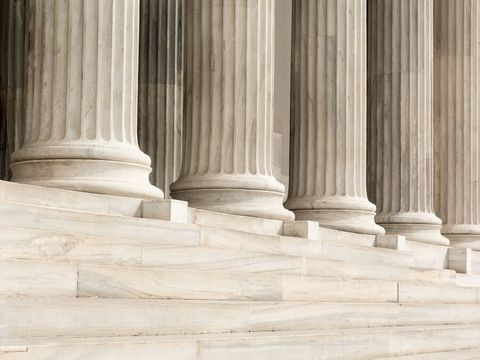FERC Clarifies Affiliate Definition, Proposes Changes to Order No. 860 Requirements, and Delays Implementation
Client Alert | 2 min read | 03.22.21
As the Federal Energy Regulatory Commission (FERC) considers changes to Order No. 860 requirements, it has now delayed the order’s effectiveness for three months to July 1, 2021, and in so doing, it has clarified its definition of “Affiliate” for market-based rate (MBR) purposes.
The goal of Order No. 860 is to create a relational database containing MBR seller information. Among other things, an MBR seller must identify its Ultimate Upstream Affiliate(s), which is the furthest upstream affiliate(s) in the MBR seller’s ownership/control chain. MBR sellers will be linked to their MBR affiliates through common Ultimate Upstream Affiliate(s) and, through this linkage, the relational database will allow for the automatic generation of asset appendices detailing affiliates of each MBR seller that own or control generation facilities and other inputs to production.
FERC has now found that an institutional investor that acquires securities of a public utility (including for Order No. 860 purposes, an MBR seller) pursuant to a blanket authorization order under Section 203(a)(2) of the Federal Power Act (FPA) is an affiliate of such MBR seller and could potentially be an Ultimate Upstream Affiliate of the MBR Seller. However, FERC also found that because the conditions imposed in a 203(a)(2) blanket authorization order prevent such an institutional investor from exercising control over that MBR seller, MBR sellers commonly owned by an institutional investor are not affiliates of each other under so long as the institutional investor owner remains under the conditions imposed in its FPA § 203(a)(2) blanket authorization order and so long as there is no other circumstance that would make them affiliates, such as common control through another owner.
The relational database, as currently contemplated, does not provide for a method to distinguish Ultimate Upstream Affiliates that acquired (directly or indirectly) the securities of an MBR seller through an FPA § 203(a)(2) blanket authorization order. As such FERC proposes to require MBR sellers whose voting securities or those of an upstream affiliate have been acquired, 10% or more, pursuant to an FPA § 203(a)(2) blanket authorization, to identify the FPA § 203(a)(2) blanket authorization docket number, and the identity of the entity whose securities were purchased under that docket number. Comments on FERC’s proposal are due sixty days after publication of the request for comments in the Federal Register.
FERC’s new timeline for Order No. 860 compliance is linked here.
Contacts
Insights
Client Alert | 5 min read | 12.12.25
Eleventh Circuit Hears Argument on False Claims Act Qui Tam Constitutionality
On the morning of December 12, 2025, the Eleventh Circuit heard argument in United States ex rel. Zafirov v. Florida Medical Associates, LLC, et al., No. 24-13581 (11th Cir. 2025). This case concerns the constitutionality of the False Claims Act (FCA) qui tam provisions and a groundbreaking September 2024 opinion in which the United States District Court for the Middle District of Florida held that the FCA’s qui tam provisions were unconstitutional under Article II. See United States ex rel. Zafirov v. Fla. Med. Assocs., LLC, 751 F. Supp. 3d 1293 (M.D. Fla. 2024). That decision, penned by District Judge Kathryn Kimball Mizelle, was the first success story for a legal theory that has been gaining steam ever since Justices Thomas, Barrett, and Kavanaugh indicated they would be willing to consider arguments about the constitutionality of the qui tam provisions in U.S. ex rel. Polansky v. Exec. Health Res., 599 U.S. 419 (2023). In her opinion, Judge Mizelle held (1) qui tam relators are officers of the U.S. who must be appointed under the Appointments Clause; and (2) historical practice treating qui tam and similar relators as less than “officers” for constitutional purposes was not enough to save the qui tam provisions from the fundamental Article II infirmity the court identified. That ruling was appealed and, after full briefing, including by the government and a bevy of amici, the litigants stepped up to the plate this morning for oral argument.
Client Alert | 8 min read | 12.11.25
Director Squires Revamps the Workings of the U.S. Patent Office
Client Alert | 8 min read | 12.10.25
Creativity You Can Use: CJEU Clarifies Copyright for Applied Art
Client Alert | 4 min read | 12.10.25
Federal Court Strikes Down Interior Order Suspending Wind Energy Development




